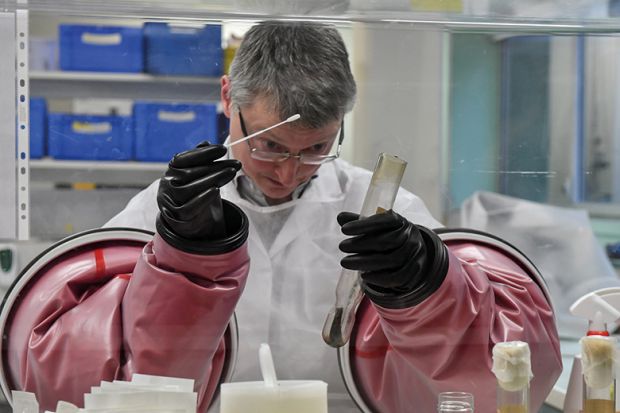Public research spending’s share of the Australian economy has fallen by almost 10 per cent in just two years, new figures suggest.
A report from the national statistics agency says that the federal and state governments spent a combined A$3.279 billion (£1.828 billion) on research and development in 2016-17, down almost A$450 million on their 2014-15 investment.
This represented 0.19 per cent of gross domestic product, down from 0.21 per cent in 2014-15.
Representative body Science and Technology Australia said that the figures, published on 5 July by the Australian Bureau of Statistics, painted a “worrying picture” of a downward trend in research funding.
“As the world moves rapidly into a science- and technology-driven future, Australia must reverse this trend to stay competitive and support research to fuel our future prosperity,” chief executive Kylie Walker said.
“These latest figures show that there needs to be a significant correction.”
In its May budget, the government pledged about A$1.9 billion to secure the future of the country’s major research infrastructure. But commentators expressed concern about the sector’s short-term prospects, pointing out that the vast bulk of the money would not be dispensed until after 2022.
The ABS report shows that government R&D spending fell by A$50 million in the two years to 2016-17, with a A$68 million increase in funding from the states erased by a A$118 million drop in commonwealth allocations.
It says that government R&D spending fell as a proportion of state economies in every jurisdiction except Western Australia.
In human resource terms, government agencies contributed about 14,800 “person years of effort” to R&D, down from more than 17,000 five years earlier. In an illustration of the difficult labour market for scientists, the federal government provided 1,800 fewer research-related jobs in 2016-17 than it had in 2012-13.
The figures also reflect a massive disinvestment in basic research, which attracted just A$122 million in 2016-17, down A$50 million from two years earlier. Fundamental research attracted 4 per cent of government R&D spending, compared with 5 per cent in 2015-16, while the share going to experimental development rose by two percentage points to 14 per cent.
The figures have emerged days after Margaret Sheil, the vice-chancellor of the Queensland University of Technology and a former chief executive of the Australian Research Council, warned of a decline in fundamental research.
Professor Sheil said that basic research had constituted just 23 per cent of research at Australian universities in 2016, down from 40 per cent in the early 1990s.
“Basic discovery research is undervalued and the appetite to fund it in decline, and we see a major turn towards applied research producing a substantial imbalance in the system,” she wrote in the Universities Australia newsletter HIGHER ED.ITION.
“We need to strike the right balance between basic and applied research, and we need to increase the quantum.”
Register to continue
Why register?
- Registration is free and only takes a moment
- Once registered, you can read 3 articles a month
- Sign up for our newsletter
Subscribe
Or subscribe for unlimited access to:
- Unlimited access to news, views, insights & reviews
- Digital editions
- Digital access to THE’s university and college rankings analysis
Already registered or a current subscriber? Login










